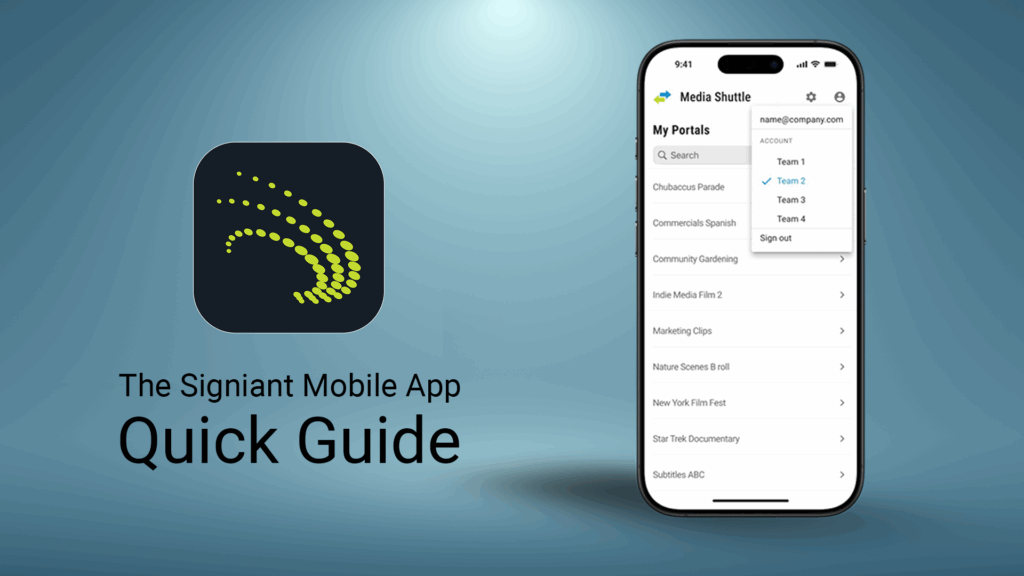Media Shuttle’s “Delegated Administration” Simplifies Tasks for Media Operations and IT
In the modern media world, there is incredible pressure on everyone involved in creating and distributing content. There’s a never-ending imperative to produce more video, accommodate more delivery outlets, and adapt to new formats – and to do everything faster and faster.
As a company with deep roots in the media business, Signiant understands your pain. So when we created Media Shuttle, our industry-leading SaaS solution for sending and sharing large files, we thought carefully about all of the different stakeholders who interact with the product. In addition to designing a super-simple interface for end users, we added some unique features to simplify the day-to-day work of media operations managers and IT administrators.
With other solutions, including Signiant’s own first-generation Media Exchange, the administration paradigm assumes that every aspect of system configuration is controlled by a technical person. There is a single administration interface, and it is tuned for engineering and IT folks. Even tasks that are more operational in nature, such as adding or removing user privileges, are handled by the same technical administrators who set up the storage and network.
In a fast-paced environment, this concentration of powers can be highly inefficient. For example, customers told us that the need to involve IT every time a new freelancer came onboard was a major pain point. Bottlenecks of this nature are solved by Media Shuttle’s “delegated administration” model, which allows the technical team to easily hand off all operational decisions regarding portals to those best qualified to make them.
What does this mean? A key component of Media Shuttle’s role-based access design involves operations managers and technical administrators each having their own web interface to Send, Submit, and Share portals. Delegated administration allows the separation of engineering/IT functions from operations-centric functions.
Specifically, this means that IT can delegate the following tasks to operational staff:
- Adding and removing users
- Assigning or modifying user rights
- Setting up email notifications
- Defining a portal’s look and feel
- Monitoring user activity
Why does this matter? The burdens on everyone in the media industry are at an all-time high. Separating technical functions from operational ones allows each side to focus on only those aspects that properly pertain to them, while ignoring all those aspects that do not. (Media Shuttle’s end-user interfaces, of course, hide both from view.) The net result is enhanced efficiency and operational speed for all parties.
While we can’t remove all the complexity from an increasingly complex media world, with Media Shuttle’s delegated administration, we can make it easier for technical staff and operations managers to do their jobs.


